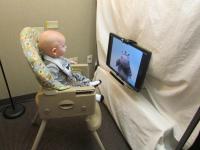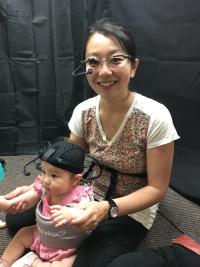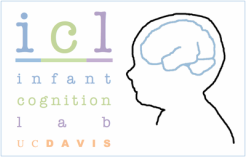What we study
Our research focuses on how infants and young children learn about the world around them. We conduct studies to understand how infants remember visual scenes, how mothers and babies read books together, as well as how toddlers solve puzzles. We are fascinated by what children learn and how they use their past experiences to shape that learning.
Our procedures
Eye tracking

We use eye-tracking technology in many of our studies. This involves using special cameras that allow us to record precisely where children look when viewing a picture or watching a movie, or even when playing with their mom. Usually this involves children sitting in front of a computer screen and recording their looking as they view images or movies. Using this approach, we have found that infants with pets look at images of dogs and cats differently than infants who do not have pets, and that how infants scan images of faces differs depending on aspects of their daily experience with faces.

In some studies, we use eye-trackers that are embedded in a cap (for infants and young children) or eyeglasses frames (for adults) that allow us to record where children (and their parents) look as they play. For example, as moms and babies play with a puzzle or read books, we can record exactly where each participant looks from moment-to-moment. Using this approach, we can understand how babies learn from naturalistic interactions with others.
Play and motor skills
In some of our studies, primarily with our older infants and young children, we may also examine how children play with different toys and puzzles. For example, we have found that the way young children play with a shape sorter changes during the toddler and preschool years.
Additionally, in many of our studies we are interested in seeing whether other factors such as gross and/or fine motor skills may influence children's play or looking behavior.
Current research
To learn more about what studies we are currently running, visit our current studies page for more information.
